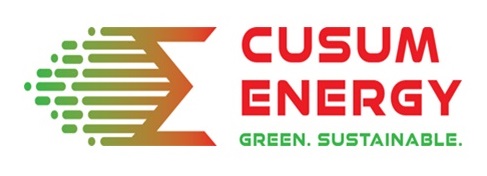In today’s world, energy efficiency is not just a goal but a necessity for businesses, industries, and homeowners looking to reduce costs and environmental impact. An energy audit is a comprehensive evaluation of a building’s energy use, designed to identify inefficiencies, suggest improvements, and optimize energy consumption.
By following a structured process, an energy audit helps organizations enhance sustainability, lower utility bills, and comply with energy regulations.

Step 1: Site Visit
A site visit is the first step in understanding the building’s energy consumption. This includes:
✅ Assessing the Physical Structure: Identifying insulation levels, air leaks, and general building conditions that may contribute to energy inefficiency.
✅ Reviewing Equipment and Systems: Evaluating the efficiency of HVAC systems, lighting, industrial machinery, and other significant energy-consuming equipment.
✅ Engaging with Facility Staff: Understanding operational schedules, equipment usage, and occupant behaviors that impact energy consumption.
✅ Collecting Preliminary Data: Gathering past utility bills, maintenance records, and any existing energy management reports.
A detailed site visit helps establish a baseline for energy consumption and provides a clear starting point for further investigation.
Step 2: Planning
Planning ensures that the audit is structured, comprehensive, and effective. Key activities include:
✅Defining Audit Objectives and Scope: Determining whether the audit will cover the entire facility or specific systems (e.g., HVAC, lighting, industrial processes).
✅Identifying Key Energy-Consuming Areas: Pinpointing high-energy usage areas to focus on during the detailed analysis.
✅Setting Benchmarks and Goals: Comparing energy usage to industry standards and setting energy reduction targets.
✅Developing a Data Collection Strategy: Deciding on the tools and techniques to be used for data measurement, such as smart meters, thermal imaging, and energy management software.
A well-defined plan ensures that no critical area is overlooked and sets the foundation for an effective audit.
Step 3: Investigating
This step involves in-depth data analysis and technical assessments to identify energy-saving opportunities. Activities include:
✅Conducting Detailed Inspections: Examining HVAC efficiency, insulation effectiveness, and the condition of lighting and electrical systems.
✅Measuring Energy Use: Using real-time monitoring devices, submeters, and energy management software to track power consumption patterns.
✅Identifying Inefficiencies: Finding issues like outdated equipment, excessive standby power usage, and suboptimal system settings.
✅Analyzing Peak Demand Periods: Identifying when the highest energy loads occur and assessing whether they can be managed more efficiently.
✅ Evaluating Air Quality and Ventilation: Ensuring that heating, cooling, and ventilation systems are functioning at optimal efficiency while maintaining comfort.
After identifying inefficiencies, it’s time to take action by implementing recommended energy-saving measures. This may involve:
✅Upgrading Lighting Systems: Replacing outdated bulbs with energy-efficient LEDs and installing motion sensors or daylight harvesting systems.
✅ Optimizing HVAC Performance: Regular maintenance, upgrading to smart thermostats, sealing ducts, and considering high-efficiency HVAC systems.
✅Installing Automation and Smart Controls: Utilizing energy management systems (EMS) to automate lighting, heating, and cooling schedules based on occupancy and weather conditions.
✅ Adopting Renewable Energy Solutions: Installing solar panels renewable energy sources where feasible.
✅Reducing Standby Power Consumption: Encouraging the use of energy-efficient appliances and implementing power-down policies for non-essential equipment.
Successful implementation requires collaboration with building management, engineers, and maintenance staff to ensure energy-saving measures are executed effectively.
Step 5: Monitoring and Continuous Optimization
Energy efficiency efforts must be continuously tracked and optimized to ensure long-term success. Businesses should:
✅ Regularly Monitor Energy Consumption: Use smart meters, submeters, and energy tracking software to measure the impact of implemented measures.
✅ Compare Data to Baselines and Benchmarks: Evaluate whether actual energy savings align with projected goals and industry standards.
✅Conduct Periodic Maintenance: Ensure all energy-saving systems and equipment remain in optimal condition through scheduled maintenance.
✅Implement Behavioral Changes: Encourage staff to adopt energy-efficient practices, such as turning off unused lights, properly using HVAC systems, and following energy-saving protocols.
✅ Perform Ongoing Audits: Regularly reassess energy performance and identify new opportunities for efficiency improvements.
✅Adjust Strategies as Needed: Modify energy management plans based on changing business needs, occupancy patterns, or technological advancements.
Conducting an energy audit is a crucial step toward cost savings, improved efficiency, and environmental responsibility. By following these critical steps—site visit, planning, investigating, implementing, and monitoring—businesses and organizations can take control of their energy consumption, reduce waste, and contribute to a more sustainable future.
A well-executed energy audit not only lowers operational costs but also helps companies meet sustainability goals, comply with regulations, and enhance their corporate reputation.

